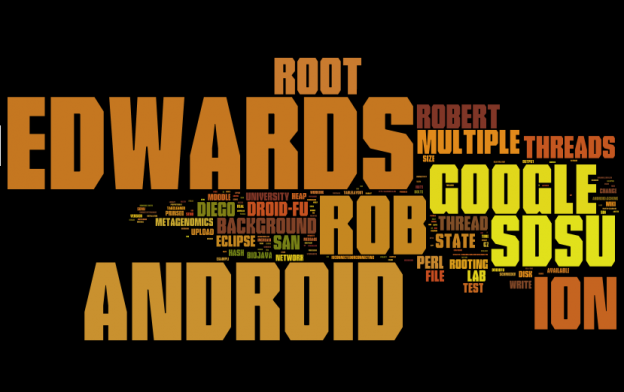We have a bunch of computers for day-to-day use. Some machines are on the public network, some are on the sdsu network but behind the firewall, and some are on the edwards lab internal network.
Public Network
You can access these machines from anywhere in the world!
edwards.sdsu.edu (external IP: 130.191.27.146; internal IP 192.168.0.20)
This is the main server for the lab. You should not use it for computing except under certain circumstances, and it houses all of the web sites that we use.
This machine has http/https ports open, and ssh available from outside the firewall on port 7010. There are a wide range of domain names that point to this machine!
pipeline1.acel.sdsu.edu (external IP: 130.191.27.145; internal IP: 192.168.0.1)
This is the main gateway to the lab, and to the internal network. This has a few http services, and you can use this for developing new webpages, etc. but it is also routing all traffic from the internal network to the outside world).
This machine has an exemption to the sdsu firewall policy, and so almost every port is open. You can ssh to this on port 22 (the default port).
pipeline3.acel.sdsu.edu (external IP: 130.191.27.147)
This is mainly used by Mary Thomas’ group for GCOM development
SDSU Network
You can access these machines from within SDSU.
octopussy.sdsu.edu (external IP: 130.191.28.81)
This is a general workhorse machine. Its a 32-bit 8-core machine that still has plenty of life left in it. Use at will for anything you want.
goldeneye (external IP: 130.191.27.151) [note that this is not a fully qualified domain name, you need to use the ip address to connect to it]
Another workhorse, this is a 64-bit 8-core machine that you can use for anything.
anthill.sdsu.edu (external IP: 130.191.226.86)
This is a 12-node 8-cores per node (most of the time) compute cluster running SGE. You should use this for repetitive tasks that are less time sensitive (because sometimes the cluster is full).
Internal Network
You can only access these machines from within the network, and you need to be on pipeline1.acel.sdsu.edu to reach them. You can use either the name or the IP address to access these machines.
pipeline0 (internal IP: 192.168.0.10) and pipeline2 (internal IP: 192.168.0.11)
These are older 32-bit 4-core machines that are perfect for development and are not usually used by anyone. If you want a machine to yourself, these would be good candidates!
shortboard (internal IP: 192.168.0.30)
This machine is currently backing up several other machines and also storing the HMP data.
longerboard (internal IP: 192.168.0.40)
Currently backing up one other machine, and housing much of the GCOM data.
rambox (internal IP: 192.168.0.50)
This 64-bit 12-core computing monster has 198 GB of RAM for you to play with. Use this for all your heavy lifting needs.


